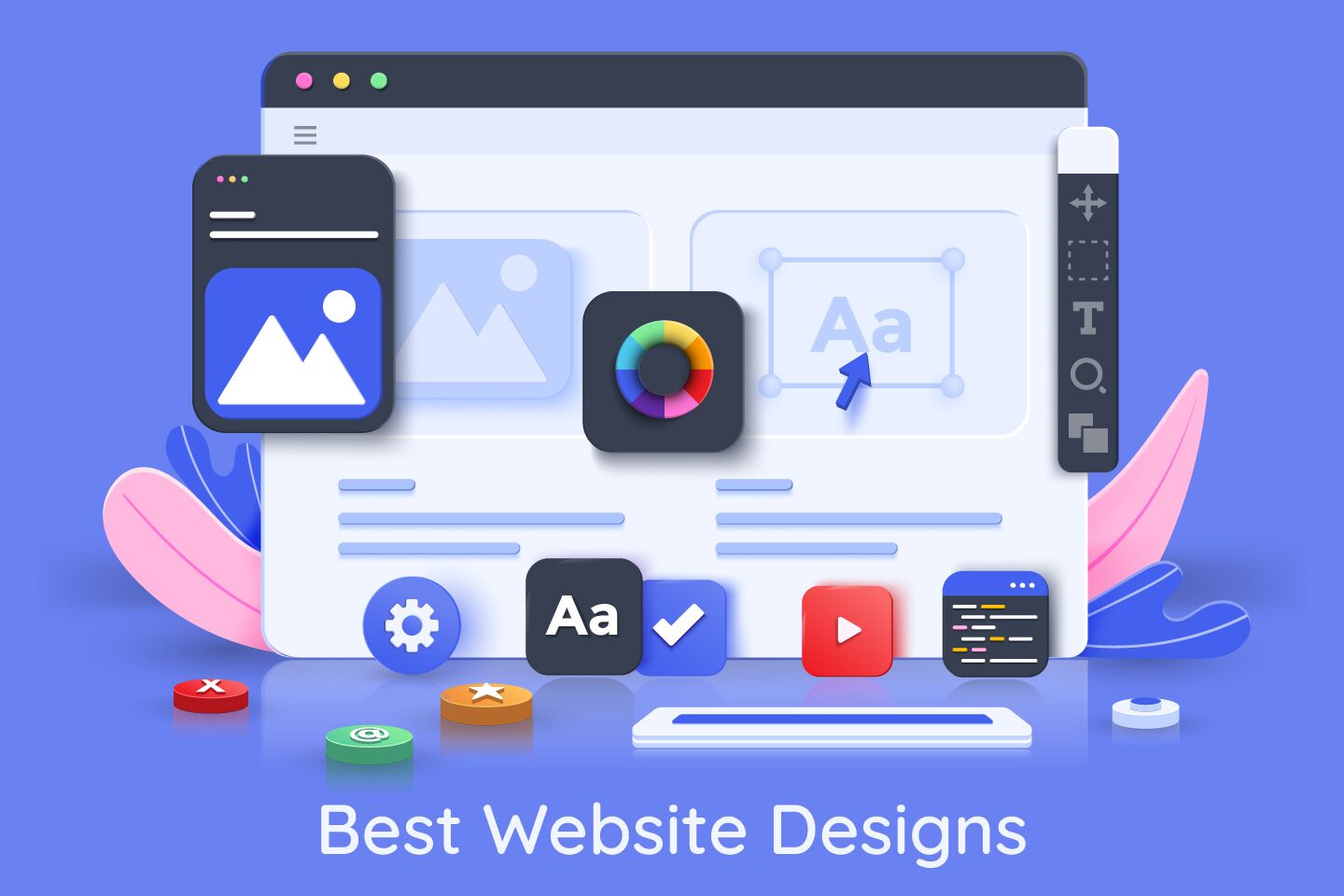An In-depth Summary of the very best Practices in Website Design for Producing User-friendly and Accessible Online Platforms
The efficiency of an online platform hinges significantly on its layout, which must not only draw in users yet additionally lead them effortlessly with their experience. Understanding these principles is critical for designers and programmers alike, as they straight impact user satisfaction and retention.
Comprehending Customer Experience
Understanding customer experience (UX) is pivotal in internet layout, as it straight influences exactly how visitors interact with an internet site. A well-designed UX makes certain that individuals can navigate a website without effort, gain access to the details they look for, and total desired activities, such as buying or signing up for a newsletter.
Secret components of reliable UX layout consist of functionality, access, and appearances. Functionality concentrates on the convenience with which users can complete tasks on the site. This can be achieved via clear navigating frameworks, logical material company, and receptive responses systems. Availability guarantees that all users, consisting of those with specials needs, can connect with the website properly. This involves adhering to established guidelines, such as the Web Material Accessibility Standards (WCAG)
Visual appeals play an essential function in UX, as visually appealing layouts can improve customer fulfillment and engagement. Color design, typography, and images must be attentively picked to produce a natural brand name identification while also helping with readability and understanding.
Eventually, focusing on user experience in website design cultivates greater individual satisfaction, urges repeat visits, and can significantly boost conversion rates, making it a basic facet of successful electronic techniques. (web design)
Value of Responsive Layout
Receptive style is an essential part of modern-day web growth, guaranteeing that web sites provide an ideal viewing experience across a vast array of gadgets, from desktop computers to mobile phones. As user actions increasingly moves towards mobile surfing, the requirement for web sites to adapt effortlessly to numerous display sizes has become critical. This adaptability not just boosts functionality yet additionally considerably effects user engagement and retention.
A receptive style employs liquid grids, flexible photos, and media questions, permitting a natural experience that keeps capability and aesthetic integrity despite tool. This method removes the requirement for individuals to zoom in or scroll horizontally, bring about an extra user-friendly communication with the material.
Moreover, internet search engine, notably Google, focus on mobile-friendly sites in their positions, making receptive style necessary for preserving presence and ease of access. By adopting receptive layout concepts, businesses can get to a wider target market and enhance conversion rates, as customers are most likely to involve with a site that provides a consistent and smooth experience. Inevitably, responsive design is not merely an aesthetic option; it is a critical need that reflects a commitment to user-centered layout in today's digital landscape.
Simplifying Navigation Structures
A well-structured navigation system is necessary for boosting the customer experience on any site. Streamlining navigating structures not only aids individuals in locating details quickly but also promotes engagement and reduces bounce prices. To achieve this, web designers ought to prioritize clarity through the use of simple tags and groups that show the content accurately.

Incorporating a search function further improves usability, permitting customers to locate content straight. Furthermore, implementing breadcrumb routes can provide users with context regarding their place within the website, advertising convenience of navigation.
Mobile optimization is an additional crucial element; navigating must be touch-friendly, with clearly specified buttons and links to fit smaller displays. By decreasing the number of clicks required to accessibility content and ensuring that navigation is regular throughout all pages, developers can create a seamless customer experience that encourages exploration and minimizes disappointment.
Prioritizing Access Standards
About 15% of the global populace experiences some type of impairment, making it crucial for internet designers to prioritize access standards in their tasks. Accessibility includes various aspects, consisting of aesthetic, acoustic, cognitive, and motor disabilities. By sticking to established standards, such as the Internet Web Content Ease Of Access Standards (WCAG), designers can develop comprehensive electronic experiences that satisfy all individuals.
One fundamental method is to guarantee that all material is perceivable. This consists of providing alternate message for pictures and making sure that videos have subtitles or transcripts. Keyboard navigability is crucial, as many individuals rely on keyboard faster ways rather than computer mouse interactions.
 Additionally, color contrast must be carefully considered to suit individuals with visual impairments, guaranteeing that message is clear against its background. When making forms, labels and error messages should be detailed and clear to assist customers in completing jobs effectively.
Additionally, color contrast must be carefully considered to suit individuals with visual impairments, guaranteeing that message is clear against its background. When making forms, labels and error messages should be detailed and clear to assist customers in completing jobs effectively.Last but not least, carrying out usability testing with individuals who have disabilities can supply vital insights - web design. By focusing on availability, internet developers not only abide by legal requirements yet also expand their target market reach, cultivating a more comprehensive online setting. This dedication to availability is important for a genuinely accessible and straightforward internet experience
Utilizing Visual Power Structure
Clearness in layout is vital, and making use of aesthetic power structure plays an important role in accomplishing it. Visual power structure describes the arrangement and discussion of aspects in such a way that clearly indicates their importance and guides individual attention. By purposefully utilizing dimension, comparison, shade, and spacing, designers can create you could check here an all-natural flow that routes customers Look At This via the web content seamlessly.
Making use of larger fonts for headings and smaller ones for body message develops a clear difference between sections. Additionally, utilizing different histories or vibrant shades can accentuate vital details, such as call-to-action switches. White space is just as vital; it helps to stay clear of mess and allows customers to concentrate on one of the most essential components, boosting readability and total customer experience.
Another trick element of aesthetic pecking order is the usage of images. Pertinent photos can enhance understanding and retention of information while additionally separating message to make content a lot more digestible. Inevitably, a well-executed aesthetic hierarchy not only boosts navigation however likewise fosters an instinctive communication with the web site, making it more probable for users to accomplish their purposes successfully.
Verdict

In summary, adherence to best techniques in website design is vital for creating instinctive and accessible online platforms. Stressing responsive style, streamlined navigation, and availability criteria fosters a comprehensive and easy to use setting. Furthermore, the efficient usage of visual pecking order improves individual involvement and readability. By focusing on these components, web developers can significantly enhance customer experience, ensuring that online systems satisfy the diverse requirements of all individuals while helping with effective interaction and contentment.
The performance of an online system pivots substantially on its style, which have to not just draw in customers but likewise guide them effortlessly with their experience. By taking on responsive layout concepts, businesses can reach a more comprehensive audience and enhance conversion prices, as customers are much more most likely to involve with a website that supplies a regular and smooth experience. By adhering to developed guidelines, such as the Internet Content Accessibility Standards (WCAG), developers can create comprehensive digital experiences that cater to all customers.
White room is equally vital; it helps to avoid mess and permits users to concentrate on the most crucial aspects, boosting readability and general user experience.
By focusing on these elements, web developers can significantly improve user experience, ensuring that on-line systems meet the diverse demands of all individuals while assisting in reliable interaction and complete satisfaction.